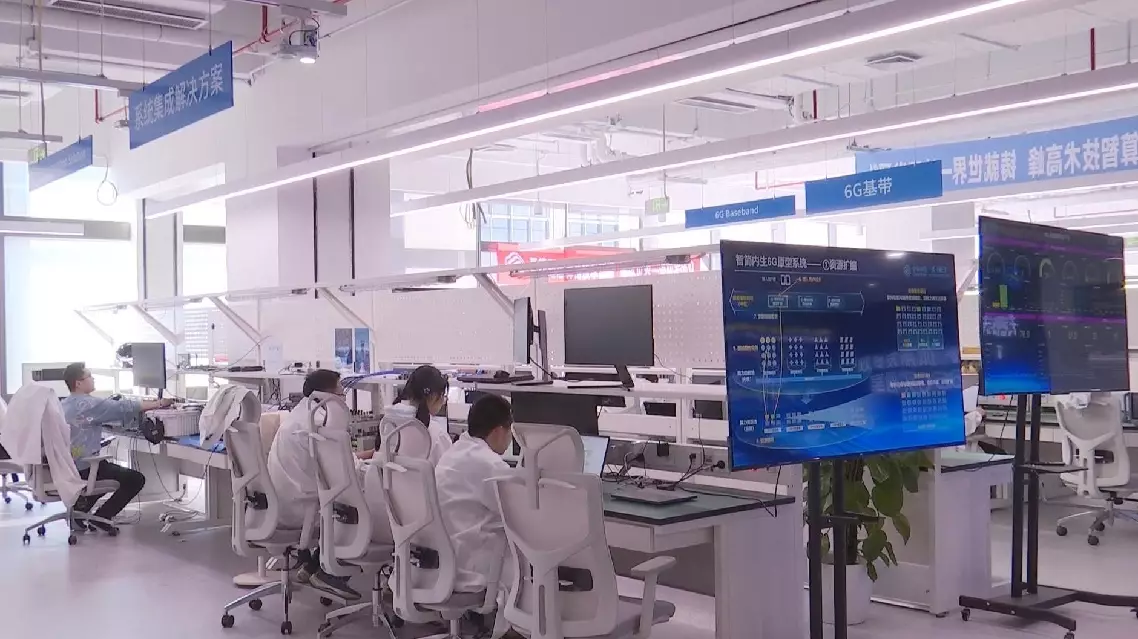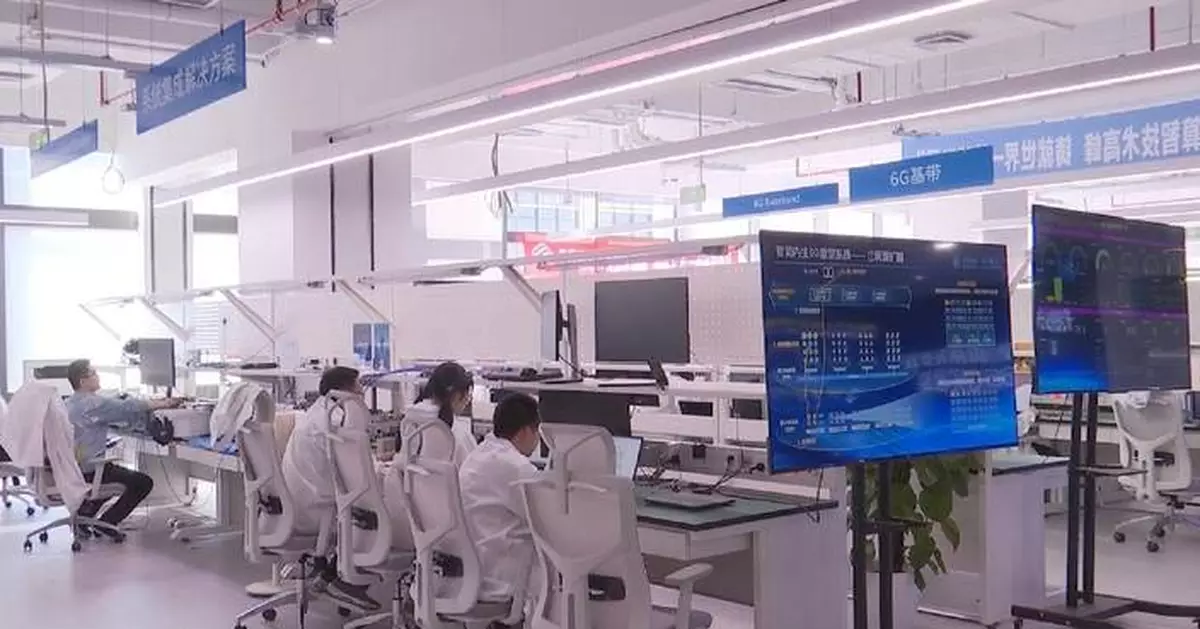China Mobile, China's leading telecommunications company, is making significant strides in advancing the development of 6G technology, aligning with the country's efforts to realize its goal of commercializing 6G, the next-generation wireless technology, by 2030.
This year's government work report for the first time clearly proposes the development of future industries such as 6G, marking that 6G has officially become an important part of the national strategies.
6G, the sixth generation of mobile communication technology, aims to provide faster internet speed, lower latency, higher reliability, and integrated communications, perception, computing, AI and big data capabilities, to support more application scenarios.
In the northern suburbs of Beijing, engineers of the China Mobile Research Institute (CMRI) under China Mobile are busy working on the next-generation wireless infrastructure in a 6G lab.
"6G will be beyond communication. That means it will integrate communication together with computing, big data, AI and also security," said Liu Guangyi, chief expert of the CMRI.
Enabling these new capabilities means redesigning the network and putting up new types of base stations. Prototype 6G base stations are currently undergoing trials in the park, showcasing enhanced data transmission at higher frequencies with broader bandwidth for accelerated speeds.
These stations interact with autonomous driving robots, simulating how future mobile devices will engage with 6G stations, foreshadowing a realm where devices and networks exchange a wealth of information.
Liu envisions a future where devices and networks exchange richer data than ever before.
"Take factories for example, we used to think offering ultra-low latency and high reliability was enough, but it's not, in fact. The factories also need precise positioning, sensing, computing, storage and AI capabilities. They even hope to integrate their entire IT systems into the network. 5G, due to limitations in its design and capabilities, can't fully meet these demands. That's why we hope 6G can solve these issues once and for all," said Liu.
To foster collaboration across the supply chain, the team has integrated a board into their base station, facilitating testing of third-party technologies in a 6G environment. This collaborative ecosystem aims to create commercial value, a goal that 5G has faced challenges in achieving.
"We need more vendors, more friends to join us. We can work together, try to push everything to go ahead, and we expect by year of 2030, our apps, new service, and also the new business models can be mature. By that way, we can start the launch of the 6G," said Liu.

China Mobile spearheads 6G development, aims for commercialization by 2030




















































